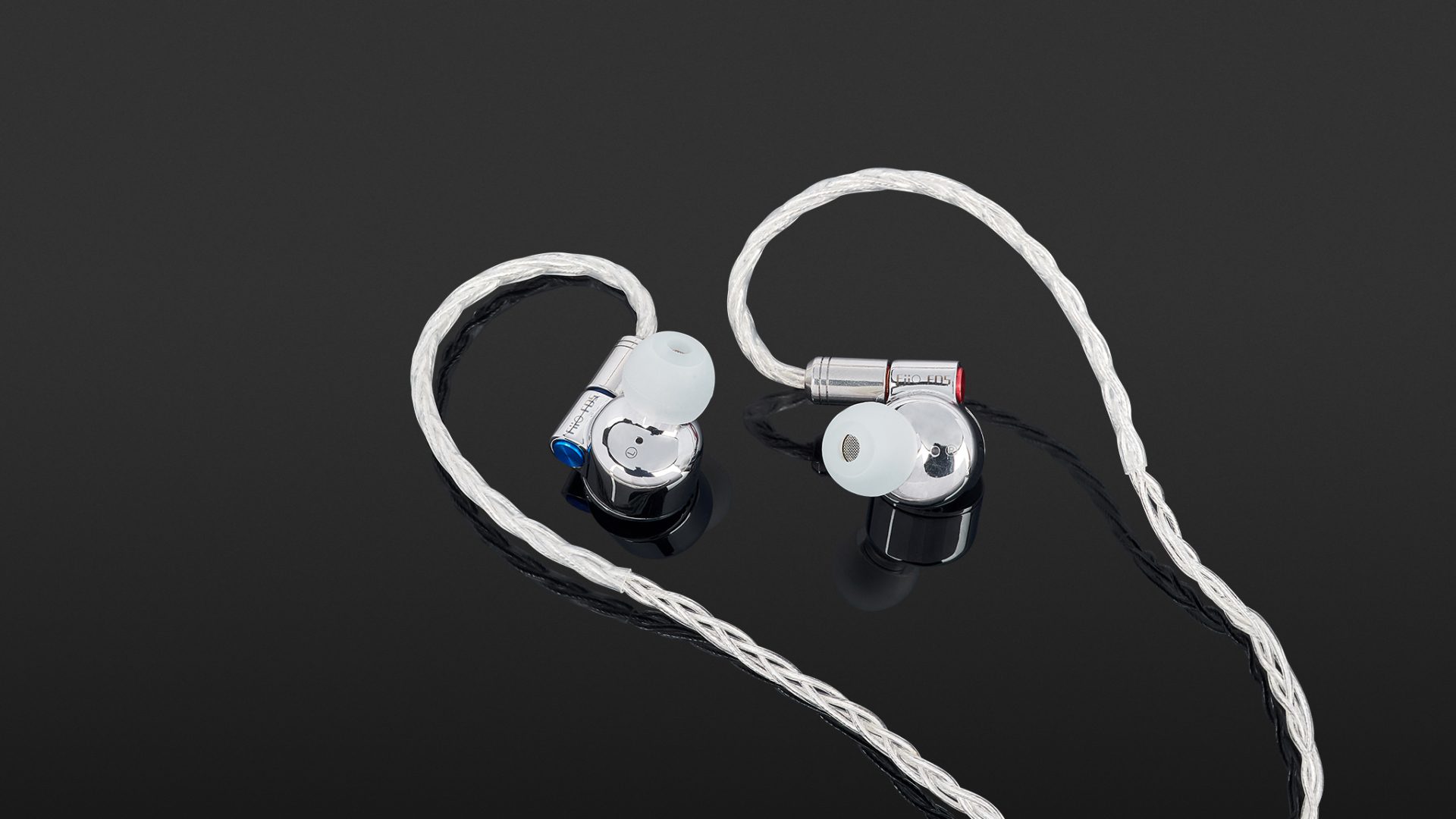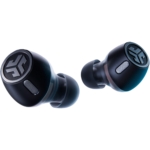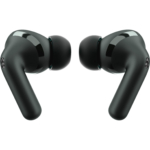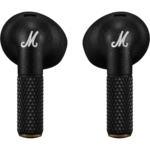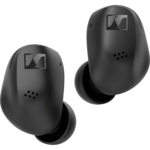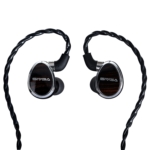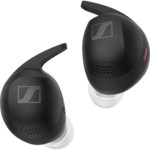FiiO’s FD5s, with their interchangeable sound tubes, offer an original, impeccably implemented option for sound customisation that invites experimentation, expands the range of uses for these in-ear monitors, and represents real added value. The practical twist-lock interchangeable plug with three connection options is also a successfully implemented feature, while the high-quality, comprehensive accessories package leaves hardly anything to be desired. The only thing that could be expanded was the choice of ear tips for the slimmer interchangeable tubes.
- high wearing comfort
- semi-open construction
- interchangeable sound tubes
- three connection options via twist-lock interchangeable plugs
- extensive accessories package
- slight cable noise above the splitter
Chinese manufacturer FiiO uses dynamic drivers with a Diamond-Like Carbon diaphragm and a beryllium coating for a clear, balanced sound image in the FD5. Tuning options such as swapping ear tips and tubes are also said to allow for customisation, offering a choice of a more bass-driven and fun listening experience.
These in-ear monitors come in a smart cardboard box with a comprehensive range of accessories, including a high-quality leather storage case, a set of narrower sound tubes, a cleaning brush, Final’s MMCX Assist and 13 pairs of ear tips. For the pre-assembled, wider sound tubes, there is a choice of bass, voice and neutral silicone ear tips in three sizes each (S/M/L) and two foam variants in M. For the slimmer interchangeable tubes, FiiO recommends the supplied triple-flange earpieces with the thinner shaft, but these are only available in sizes S and L, which seems a bit meagre in comparison.
Handling
Looks-wise, the solid, semi-open stainless steel housings are real gems and very eye-catching, with the fit nestling excellently into the ear cups. Even the not particularly low weight of eleven grams per side does not diminish the high, long-term wearing comfort of the IEMs, especially since their over-ear design provides relief and offers a lot of stability. However, we noticed that the stainless steel housings were initially cold when put on, which might be felt to be unpleasant, so it is advisable to pre-warm these in-ears in your hand for a few moments first.
Variety of connections
The FD5’s 1.20-metre cable is made of 152 single-cell copper conductors coated with monocrystalline silver, according to the manufacturer, and this is supposed to ensure a lively and clear sound; it also gives an impression of high quality. However, the cable is not completely free of microphonic effects, as the section above the splitter can generate cable noise when it comes into contact with clothing or skin, but this is not strong; indeed, it is quite subtle and only perceptible when playback is paused. A very clever and practical solution, thanks to the twist-lock interchangeable plug, are three connection variants that can be used without the need for an adapter. The IEMs can thus be operated flexibly, depending on the source or headphone amplifier, either with a 3.5 mm mini-jack or balanced with either a 2.5 mm or 4.4 mm jack. A common MMCX connector is also used on the side of the housing, which means that the cable can be replaced if necessary.
Construction
The FD5 is a one-way system that has an extended frequency response of 10 to 40,000 Hz and is the current flagship among the manufacturer’s dynamic in-ear monitors, offering certain extras. An acoustic prism is installed in front of the 12 mm drivers with DLC (Diamond-Like-Carbon) diaphragm and beryllium coating, which is designed to focus and optimise the airflow for uniform imaging. To minimise distortion in the bass range, a so-called “volcanic field” is also used on the back, which is intended to ensure rapid pressure equalisation.
Another special feature of the IEMs is their semi-open design, which basically has an effect on the system’s insulation properties. These are noticeably lower than those of classic, closed in-ears, which means that the surrounding noises are not blocked out to such an extent. Conversely, the sound dispersal is also a little higher, although the overall differences are not as far-reaching as between closed and semi-open earpieces.
Sound
The semi-open housing design is also evident in the sound, which seems decidedly airy for an in-ear system, especially as the imaging benefits from a perceptible three-dimensionality. The homogeneity of the sound is also impressive, and this is certainly due to several factors and not just to the acoustic prism. On the one hand, there is a discreet, rounding warmth, and on the other hand, a not insignificant factor is that the tuning seems to be coherent in itself as well as in all parts. From my point of view, a prime example is the bass reproduction, which presents itself as an organic unit and is seamlessly cast, but at the same time, is skilfully embedded in the overall structure. The bass sounds energetic and reaches down very deep without losing precision and becoming spongy so that it is a delight when the low bass kicks in with electro etc. However, the bass reproduction does not seem all that slim and tight; instead, it is a little more full-bodied and positively rich. The timing, too, tends to be relaxed rather than fast, regardless of any accuracy and seems lively but laid-back and by no means hectic.
This is followed by a clean, fine-drawing midrange with a pleasant feel, which is able to subtly smooth edges and corners without distorting the basic character and does not reveal any weaknesses across genres. Live recordings, acoustic arrangements, classical music and jazz all harmonise well, although I also enjoyed mixing nu-jazz with electronic influences. While I would describe the reproduction of the mids as well-behaved, the high-frequency range seems spirited in a positive sense, possessing a stable presence up into the upper realms as well as verve and freshness, setting the tone. The treble reproduction can tickle the ear, but it doesn’t seem impetuous or cheeky. Instead, it is playful and a bit perky now and then, which gives the sound a well-measured pep and, from my point of view, benefits it.
Tube replacement
The exchanging of the sound tubes is well thought out and extremely practical, as it can be done at any time without tools by unscrewing the mounted tubes with ear tips from the housings and replacing them. If the narrower version is screwed in and fitted with the triple-flange ear tips, there is a more direct sound impression that relies on increased assertiveness. In my view, the narrow Sound Tubes are therefore well suited for use during outdoor activities, travelling or commuting, while I would favour the wider standard tubes for on the sofa at home. However, if you generally want a more bass-oriented sound with a softer treble response, use the slimmer version accordingly.
Technical specifications
- Ear couplingIn-ear
- Typesemi-open
- Transducer principledynamic
- Frequency response (headphones)10 - 40.000 Hz
- Impedance32 ohms
- Sound pressure level (SPL)@1mW: 109 dB
- Weight with cable52 g
- Weight without cable22 g
- Cable length120 cm
What's in the box
- 13 pairs of eartips: bass-emphasised, voice-emphasised and neutral eartips in three sizes each (S/M/L) plus triple flange in two sizes (S/L) and foam eartips (2xM)
- One additional pair of sound tubes
- Cleaning brush
- Final MMCX Assist tool
- Leather storage box














